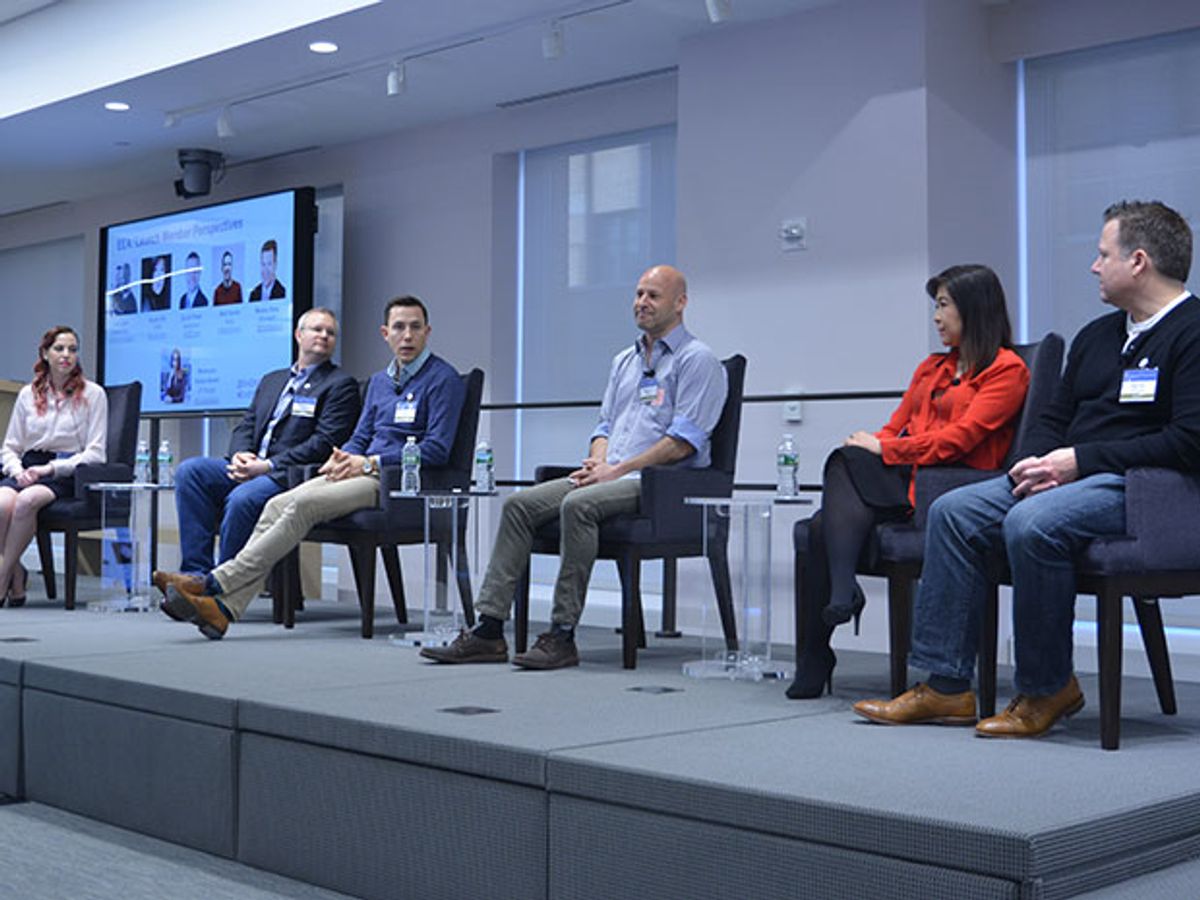Over the last two years, Ethereum, a blockchain-based platform for self-executing contracts and other applications, has attracted many admirers in the corporate world. The platform—a peer-to-peer network similar to the one that runs Bitcoin—is already supporting decentralized prediction markets, autonomously run lotteries, and a host of governance tools. And there is much speculation that the same building blocks could be used to replicate and streamline services offered by financial institutions, insurance agencies, and health-care providers, to name but a few.
Most of the of the titans in these industries, however, have kept their distance, watching this radical new technology take shape while waiting to see whether it would embrace the needs of the companies that might want to build on it.
On Tuesday, some of the biggest names in the sectors of finance and software—including Intel, Microsoft, J.P. Morgan, and Accenture—finally stepped into the fray, announcing their intention to work together on a private version of the Ethereum blockchain. Their efforts will be coordinated under the auspices of a new nonprofit organization called the Enterprise Ethereum Alliance, which will guide the engineering of a standard blockchain technology based on the Ethereum blockchain and customized for the needs of all enterprise members.
By Tuesday, more than 30 companies had joined the alliance. Although the organization was formed in December, it was not formally launched until this week, during an event that also showcased the group’s plans for the future.
At the launch, members presented a road map explaining how they would tailor their version of the Ethereum technology and add much needed features, such as privacy controls and plug-and-play consensus mechanisms—the component in blockchain technology that dictates the order of new transactions and ensures all parties are seeing the same thing. These features must be in place before these highly regulated companies can move their services to a blockchain.
Ethereum itself was launched in 2015 and was designed to take the lessons learned from Bitcoin and apply them to general computing tasks, enabling applications that are executed over a peer-to-peer network and in a fashion that eliminates the need to trust the parties involved. The hype that ensued has seeped into every corner of the tech industry. If a company has a database somewhere in its machinery, then it’s a sure bet someone has considered rebuilding it on top of Ethereum.
Since it arrived, Ethereum has been run as an open-source project, with no formal governance structure. And it has relied on the organic collaboration of like-minded engineers, many of whom are not compensated for their work. It is no surprise that as such the development process did not always prioritize the interests of corporations.
Many companies, especially those in the financial industry, initially opted to experiment with less open types of blockchain technologies—databases called permissioned ledgers, which place restrictions on who can access the data. In 2014, a consortium of banks joined forces and formed a company called R3 to build their own blockchain intended to exclusively serve the financial sector. And in 2015 the Linux Foundation created the Hyperledger project, which has brought together businesses across multiple industries and yielded an open-source blockchain project called Fabric.
The Enterprise Ethereum Alliance, on the other hand, seeks to develop a private version of Ethereum—a permissioned ledger—while working with developers from the public blockchain to advance the technology together.
It remains to be seen the extent to which developers in the public and private chain projects will work together. Vitalik Buterin, the inventor of Ethereum, did not attend the launch, but he did send along a prerecorded message to the group in which he outlined his goals for the future and obliquely invited the audience to collaborate on areas where the two technologies overlap.
“If challenges get solved in one context, the solutions can be ported over to another context,” he said.
According to Jeremy Millar, the founder of the alliance, the organization will seek to add some formal governance to the development process, while also trying to retain the open-source ethos from which the original Ethereum technology was born.
The alliance will be run by a rotating board of directors selected from founding members, including Banco Santander, BNY Mellon, J.P. Morgan, Accenture, Intel, Microsoft, CME Group, Cornell University's blockchain research group, IC3, and three blockchain startups—ConsenSys, Nuco, and BlockApps.
But, whenever possible, the board will defer to the expertise of the technologists within their companies, allowing them to make development decisions in an organic, open-source way. For this reason, the alliance has chosen not to encumber itself with subcommittees and formal working groups.
“When you're not quite sure what you want to do and are just getting off the ground, trying to prewire all that creates rigidness that actually slows you down and decreases your flexibility," says Millar. “We don't want our board to be making coding decisions unless they absolutely have to mitigate a dispute. We want the technologists to be leading the technology.”
Many of the speakers at Tuesday’s launch represented companies that are in direct competition with one another. But collaboration was the common theme of the day.
“This technology, unlike many others that we've looked at or created in the past, requires collaboration and a network,” said Sandra Ro, the leader of digitization for CME Group, one of the members of the alliance. “You build your own, you'll be a very lonely solo party. It's not ‘build it and they will come.’ It's ‘we need to network.’ We need to collaborate. We need to build this together.”



